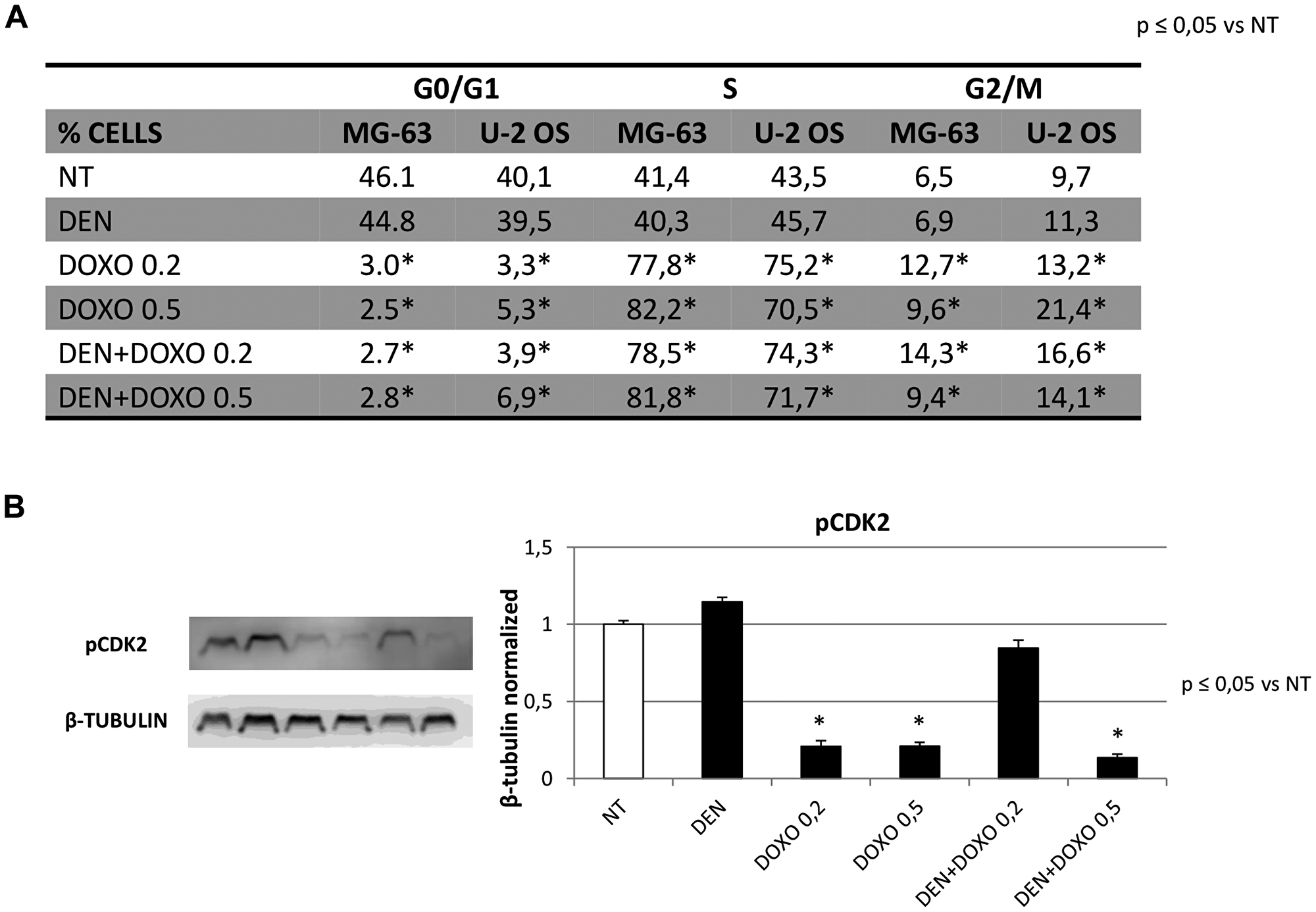Oncotarget recently published "Can Denosumab be used in combination with Doxorubicin in Osteosarcoma?" which reported that Denosumab is a monoclonal antibody with high affinity and specificity to RANK-L, the ligand released by osteoblasts that enhances osteoclasts differentiation and bone resorption.
The authors investigated the effects of Denosumab alone and in combination with Doxorubicin, in two human osteosarcoma cell lines.
They observed for the first time an anti-invasive effect of Denosumab in OS cells and confirmed its anti-osteoporotic activity also in Osteosarcoma.
On the other hand, they demonstrate that Denosumab not only does not affect apoptosis and cell cycle progression but when used in combination with Doxorubicin, it causes an unexpected reduction of its activity.
In conclusion, while their results certainly support and confirm the efficacy of Denosumab in Osteoporosis, the Oncotarget authors discourage the use of Denosumab in addition to conventional chemotherapy in Osteosarcoma, even though, certainly further investigations are necessary to better clarify the clinical role of this monoclonal antibody in cancer.
The Oncotarget authors discourage the use of Denosumab in addition to conventional chemotherapy in Osteosarcoma
Dr. Francesca Punzo from The University of Campania “Luigi Vanvitelli” said, "Osteosarcoma (OS), among bone tumors, is the most common in children and adolescents."
The bone remodeling process is maintained by a fine balance between bone resorption by OCs and new bone deposition by OBs.
The receptor activator of nuclear factor κB ligand is a protein highly expressed by OBs and able to induce OCs differentiation and activation by binding the Receptor Activator of Nuclear Factor κ-B, its specific receptor on OCs surface.
It exerts its action by limiting the OCs differentiation and activation, suppressing bone resorption, hence, contributing to increasing bone mineral density.
Other applications of Den are in patients with bone metastasis from solid tumors, in order to reduce the occurrence of skeletal fractures, as well as in patients with hypercalcemia due to Den capacity to reduce the calcium release by OCs.

Figure 6: Cell Cycle progression in OS Cell lines before and after treatment with Den and Doxo by cytofluorimetric assay and Western Blotting (pCDK2). (A) Percentage of MG63 cells and U-2 OS cells at different phases of the cell cycle (G0/G1 phase, S phase and G2/M phase) after treatments with Den [30 ug/mL] and Doxo [0,2/0,5 μM] alone or in combination, for 48 h. Cells were harvested, fixed, incubated with Muse Cell Cycle reagents and analyzed on “MUSE Cell Analyzer”. (B) pCDK2 protein expression levels in OS cells were determined by Western Blot, starting from 15 mg of total lysates after 48 h of exposure to Den [30 ug/mL] and Doxo [0,2/0,5 μM] alone or in combination. The most representative images are displayed. The proteins were detected using Image Studio Digit software and the intensity ratios of immunoblots, compared to that of untreated control (NT), taken as 1 (arbitrary unit), were quantified after normalizing with respective loading controls for the housekeeping protein β-Tubulin. Histogram shows the relative quantification for pCDK2 expression as the mean ± S. D. from three experiments. A One-way analysis of variance (ANOVA), followed by Tukey's post hoc test, has been used to evaluate the statistical differences among groups. *indicates p ≤ 0.05 compared to the untreated control (NT).
Based on this need and seen the role of Den in bone mass loss conditions, the authors decided to investigate the effects of this human monoclonal antibody in bone metabolism of human-derived OS cells expressing RANK/RANK-L alone and in combination with Doxo.
The Punzo Research Team concluded in their Oncotarget Research Paper that “our study confirmed the well-known anti-osteoporotic activity of Den and, for the first time we observed an anti-invasive effect in MG63 and U-2 OS cell lines.
Despite this important result, our initial hypothesis on the possible combined use of Den and Doxo has not been validated, which alerts us regards the clinical use of this drug in OS.
In addition, in the literature are described two case reports of a Giant Cell Tumor of bone treated with Den that developed in high-grade OS.
Therefore, while our results certainly support and confirm the efficacy of Den in OP, definitely further studies are necessary to clarify its clinical role in bone cancer.”
DOI - https://doi.org/10.18632/oncotarget.27669
Full text - https://www.oncotarget.com/article/27669/text/
Correspondence to - Francesca Punzo - [email protected]
Keywords - osteosarcoma, Denosumab, Doxorubicin, RANK-L, bone mass loss
About Oncotarget
Oncotarget is a biweekly, peer-reviewed, open access biomedical journal covering research on all aspects of oncology.
To learn more about Oncotarget, please visit https://www.oncotarget.com or connect with:
SoundCloud - https://soundcloud.com/oncotarget
Facebook - https://www.facebook.com/Oncotarget/
Twitter - https://twitter.com/oncotarget
LinkedIn - https://www.linkedin.com/company/oncotarget
Pinterest - https://www.pinterest.com/oncotarget/
Reddit - https://www.reddit.com/user/Oncotarget/
Oncotarget is published by Impact Journals, LLC please visit http://www.ImpactJournals.com or connect with @ImpactJrnls
Media Contact
[email protected]
18009220957x105



